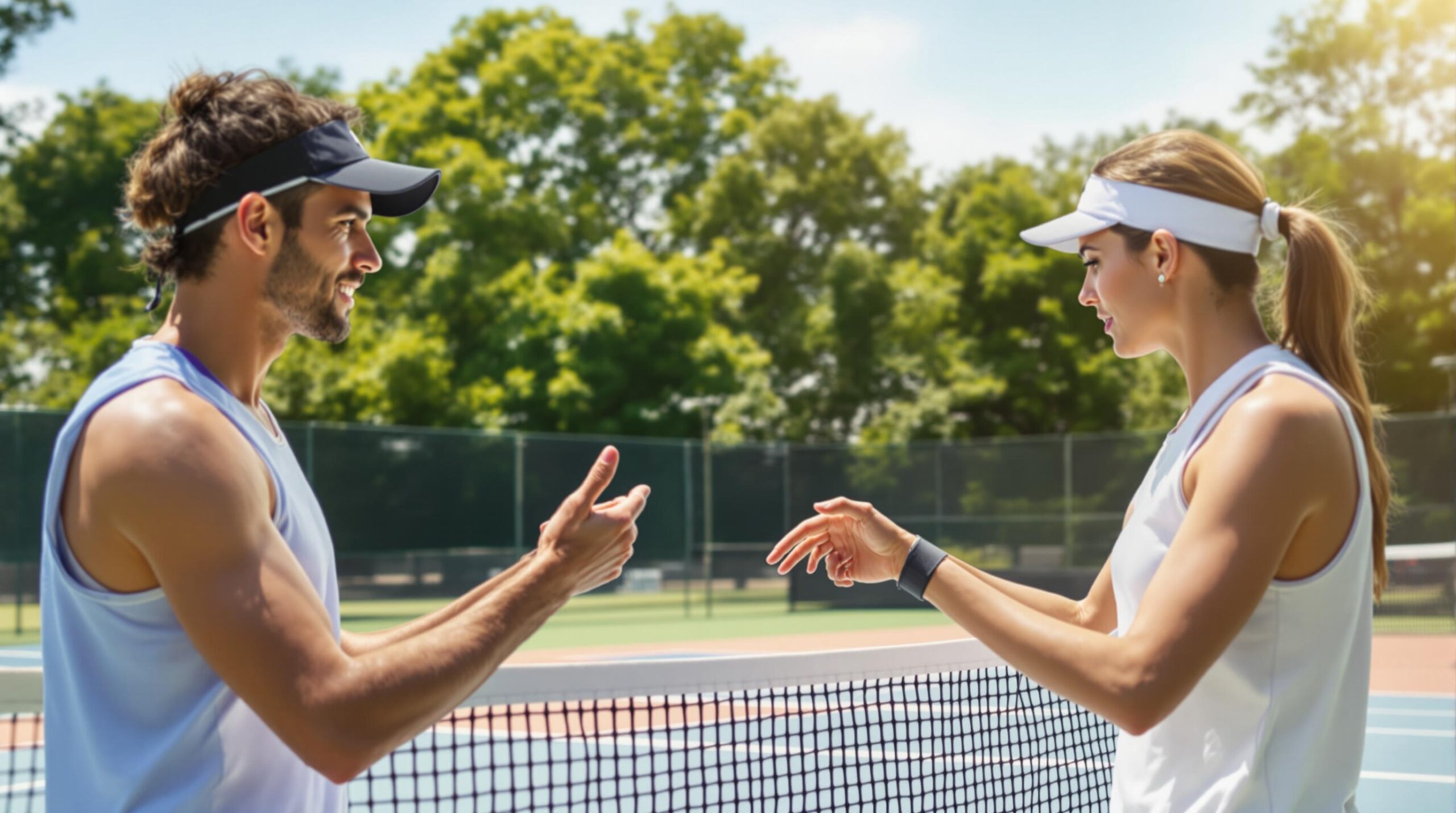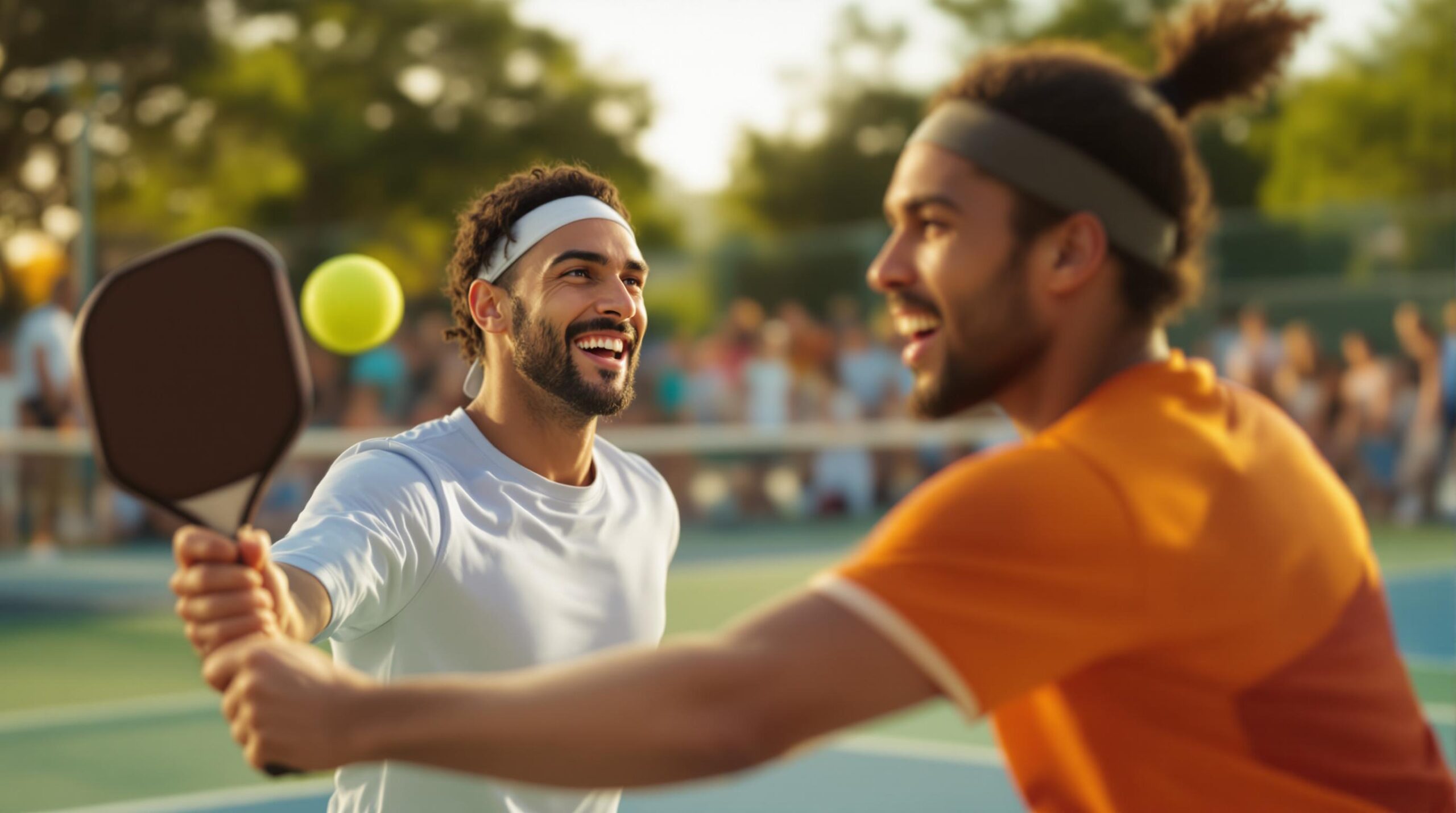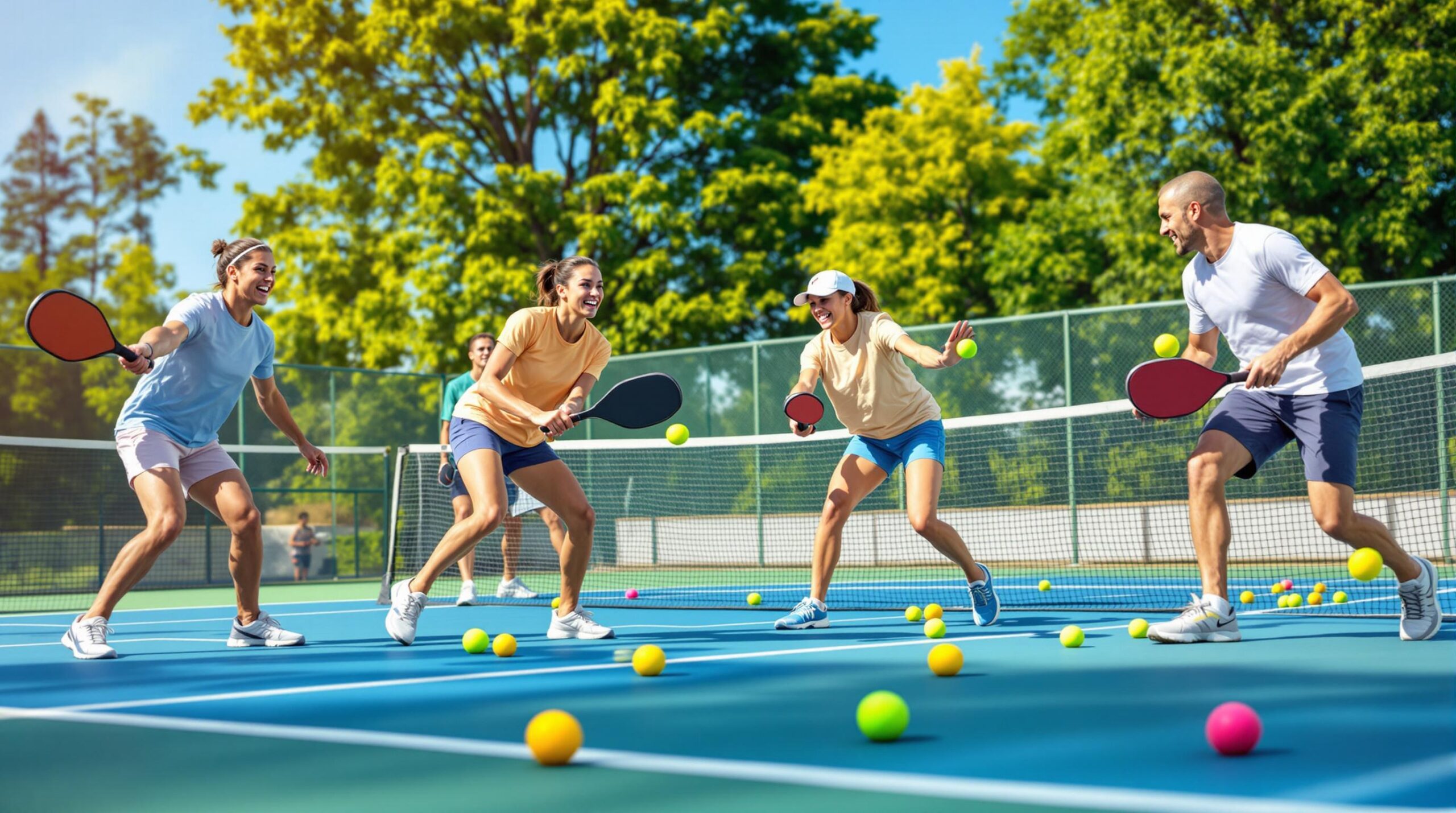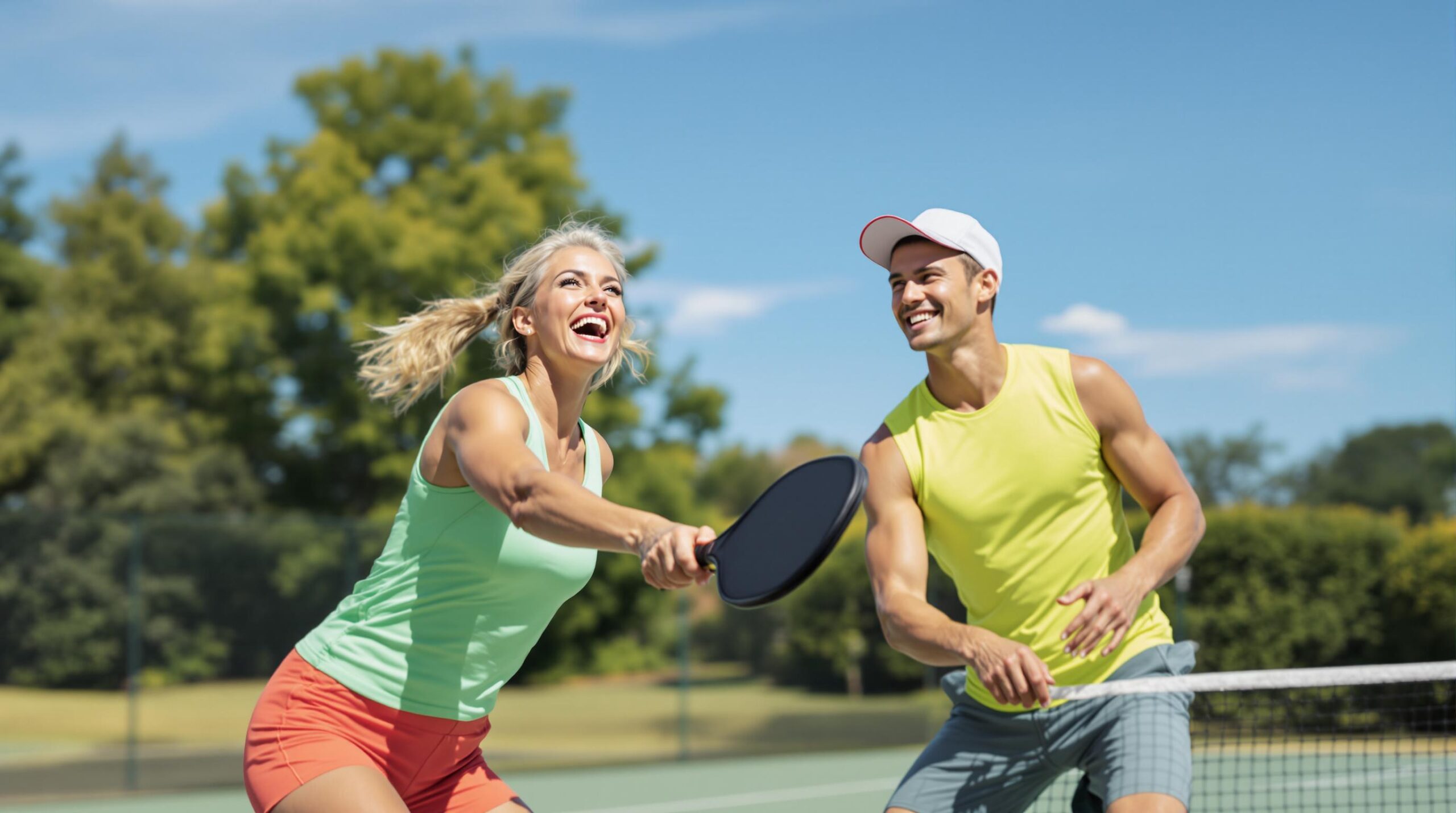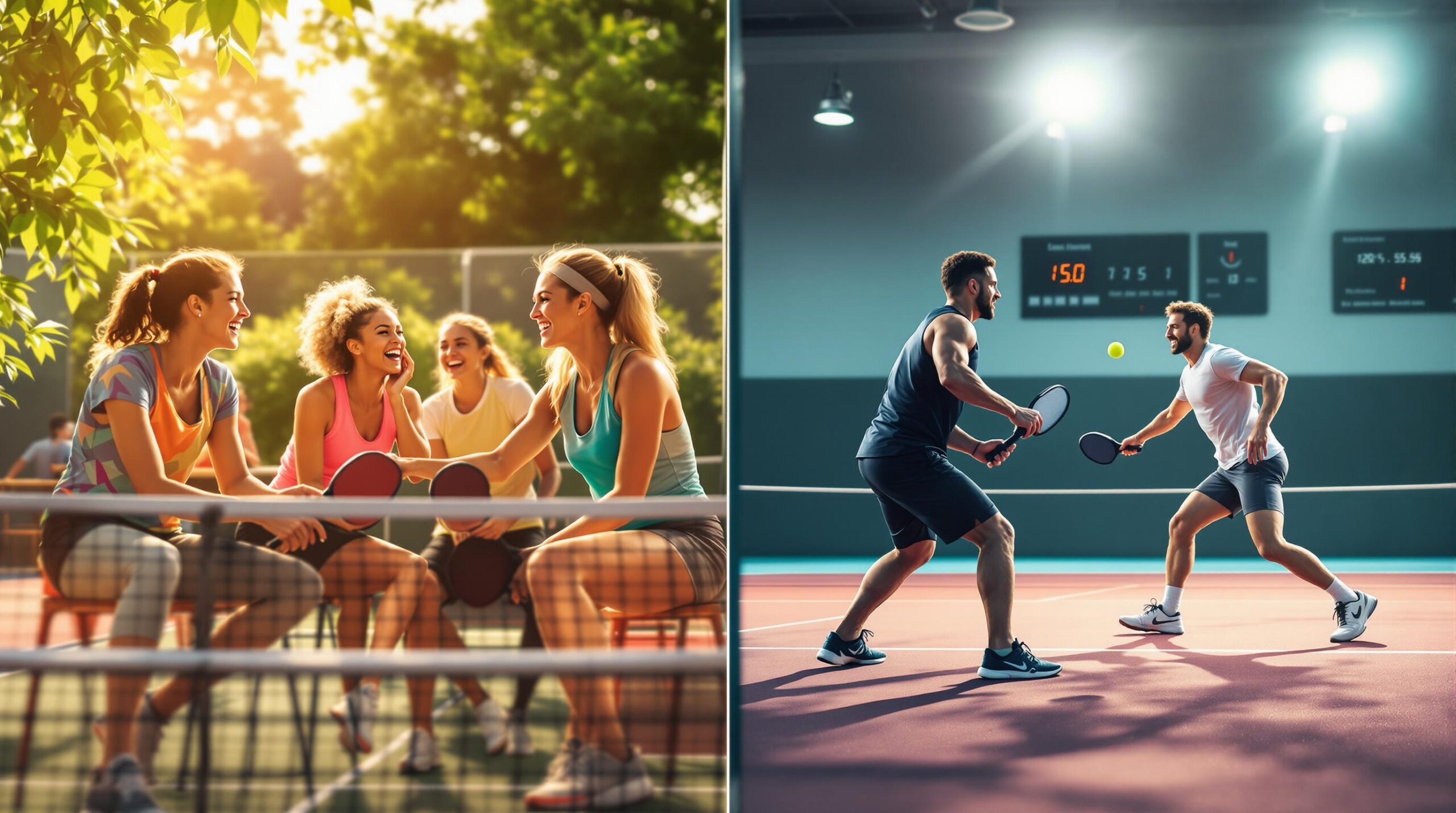Want to win more doubles games? Start with clear communication! Strong communication helps you and your partner stay in sync, avoid mistakes, and play smarter. Here’s a quick breakdown of how to improve it:
- Use Verbal Commands: Simple calls like "Mine!" or "Switch!" ensure clarity during fast-paced rallies.
- Practice Non-Verbal Signals: Hand gestures and body language help when the court gets noisy.
- Plan Before Matches: Discuss strategies, signals, and roles to avoid confusion.
- Avoid Common Mistakes: Prevent delayed calls, conflicting actions, and vague signals by practicing clear routines.
- Build Trust: Respect your partner’s decisions and encourage each other during play.
Want to get better fast? Regular practice and match play, like in Paddle Party leagues, can help you master these skills and build stronger partnerships.
Clear Communication Methods
Basic Verbal Commands
Verbal commands help teammates stay coordinated and avoid mix-ups during fast-paced games. Here’s a quick guide:
| Command | Meaning | When to Use |
|---|---|---|
| "Mine!" | You’re taking the shot | When you’re hitting the ball |
| "Yours!" | Partner should take it | When letting your partner hit |
| "Switch!" | Change positions | During position changes |
| "No!" | Let the ball go out | When spotting an out ball |
| "Middle!" | Ball heading between players | For middle court shots |
| "Back!" | Move to the baseline | When retreating |
Keep these commands short and clear to ensure they cut through the noise on the court. Practicing them during warm-ups can make them second nature.
When verbal cues aren’t enough, non-verbal communication becomes crucial.
Hand Signals and Body Language
Courts can get noisy, making non-verbal signals a must. Doubles teams often rely on these visual cues to stay in sync:
- Point to target – Shows where you plan to serve or return.
- Raised fist – Signals readiness for aggressive net play.
- Open palm down – Indicates staying back for a defensive position.
- Tapping paddle on court – Acknowledges your partner’s signal.
- Side-to-side head shake – Disagrees with a planned shot or strategy.
Make it a habit to face your partner during breaks. This allows you to quickly read their signals and adjust your play accordingly.
Pre-Game Planning
Taking a few minutes before the match to plan your communication strategy can make a big difference. Use this time to agree on:
- Verbal commands and hand signals
- Court positioning and formations
- Service and return strategies
- Net play and defensive coverage
Discussing personal preferences also helps the team gel better. Talk about:
- Your preferred side of the court
- Comfort with specific shots
- Any physical limitations
- Strategies for managing energy levels
A well-thought-out pre-game plan builds trust and ensures smoother teamwork during the match.
Building Partner Trust
Trusting Your Partner’s Decisions
Trust goes beyond just communication – it’s about having complete confidence in your partner’s choices on the court. Each player brings their own strengths, and trust allows those strengths to shine.
Here’s how to build trust during play:
- Respect your partner’s shot choices without second-guessing them.
- Follow court coverage calls immediately to avoid hesitation.
- Encourage with positive reinforcement, praising good plays and moving past mistakes quickly.
When trust is in place, you can focus fully on your role without distractions. Support each other in every play, and carry that teamwork into consistent practice sessions.
Regular Practice Sessions
Regular practice is key to developing chemistry and understanding between partners. A well-structured practice helps you build trust and improve coordination.
| Practice Focus | Purpose | Key Activities |
|---|---|---|
| Shot Patterns | Learn partner tendencies | Drive and volley drills |
| Position Switching | Improve court coverage | Stacking practice |
| Game Scenarios | Strengthen decision-making | Point-play situations |
| Communication Drills | Boost verbal/non-verbal cues | Call-out exercises |
To get the most out of your practice:
- Schedule 1-2 sessions per week.
- Set specific goals for each session.
- Include pressure drills to simulate match intensity.
- Evaluate your performance and adjust as needed.
Practice until your movements and decisions become second nature. This automatic response is crucial during high-pressure matches, where every second counts. When trust is solid, your team will move as one, covering the court effectively and making quick, confident decisions – essential for success in competitive play.
Pickleball COMMUNICATION: The Most Important Skill in …
sbb-itb-b64fdb6
Court Coverage Basics
Solid court coverage builds on pre-game planning and trust between partners, keeping your team in sync during play.
Player Position Assignments
Good court coverage starts with assigning roles that match each player’s strengths. For instance, a player skilled at volleying might take the net, while a partner with strong groundstrokes handles the baseline. Factor in dominant sides, reaction times, and physical abilities when deciding roles. This setup ensures smoother coordination, especially during fast rallies, and helps manage shared zones effectively.
Middle Court Defense
Clear communication is critical for handling balls in shared areas. Teams should use simple, agreed-upon verbal cues to avoid confusion over who will take control. Quick, decisive calls help prevent coverage gaps and maintain balanced defense.
Stacking and Position Switching
Stacking keeps doubles teams in their preferred positions throughout a match. This strategy works best with precise signals and timing. For example, partners might use hand signals or code words to coordinate movements during serves, returns, or mid-rally adjustments. Regular practice sharpens these skills, improving coordination and communication.
Learning From Each Match
Every game offers a chance to sharpen team communication. By spotting recurring challenges and focusing on specific areas to improve, partners can boost their overall gameplay.
Match Analysis Tips
Post-match analysis is key to building stronger team dynamics. After each game, take time to review critical communication moments with your partner. Talk about situations where communication worked well – or fell short. For example, was there confusion about court positioning? Were signals unclear? Keep a record of these observations, like noting a missed signal on a short lob, to identify patterns that need attention.
Tracking Progress
Set measurable goals to track your improvement. For instance, Paddle Party league players can assess their progress by how smoothly they schedule matches. If scheduling becomes more organized and confusion-free, it’s a sign of better off-court coordination – something that often translates to stronger in-game performance. Compare results from match to match to spot trends, celebrate wins, and adjust strategies for future games.
League Play Benefits with Paddle Party
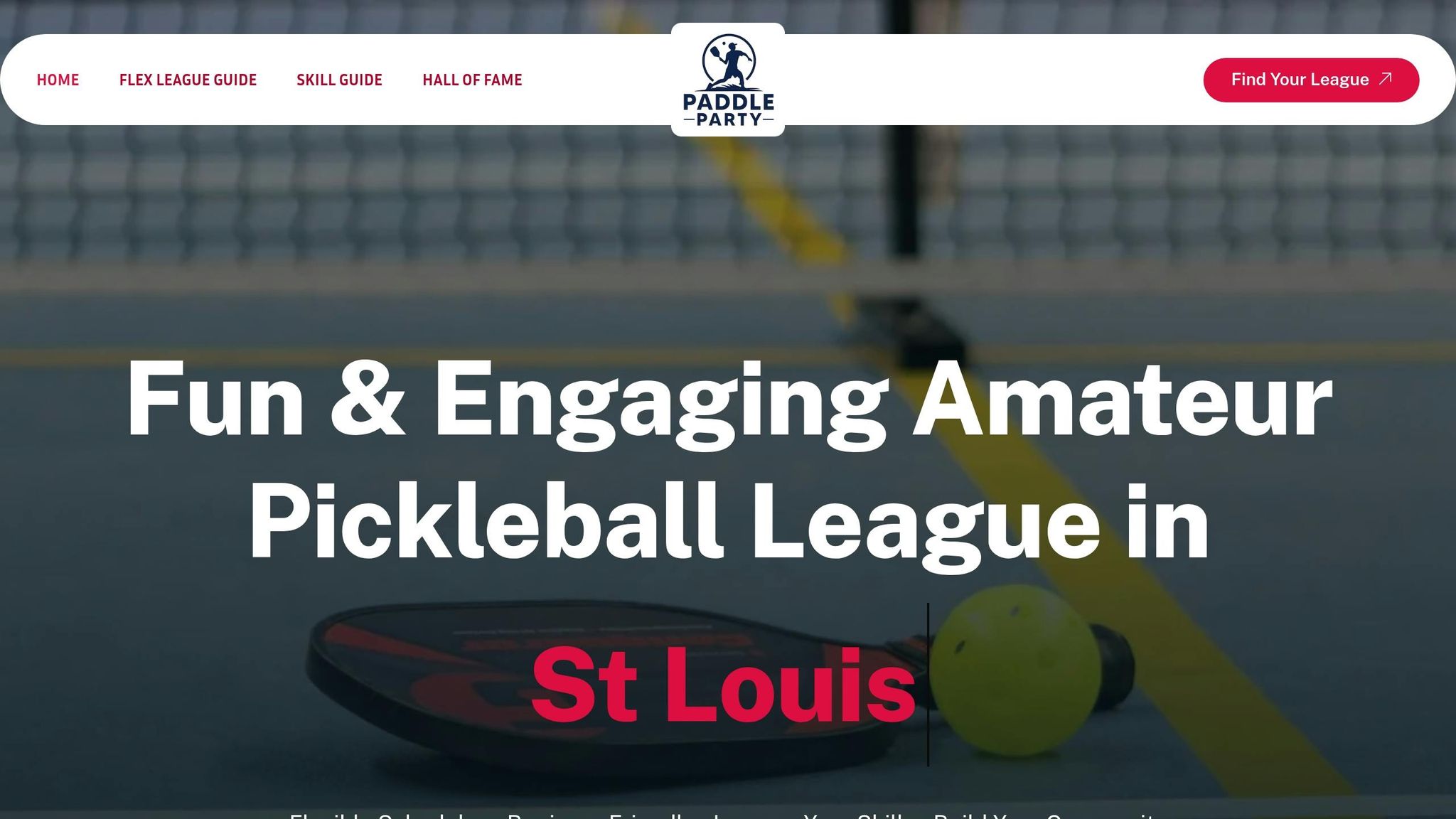
Paddle Party leagues are designed to help players improve their doubles communication skills. By offering consistent match opportunities, the league creates a perfect setting for teams to build stronger on-court connections.
Regular Match Experience
Paddle Party’s league format provides teams with regular chances to work on their communication techniques, with over 20,000 matches played on the platform. Its scheduling flexibility allows partners to choose match times that suit them, encouraging pre-game strategy discussions and planning.
The league features multiple divisions, ranging from Novice Beginner to Advanced, ensuring fair competition. This balanced setup allows players to focus on teamwork and communication without unnecessary pressure.
"Thank you so much! I had a great time and met some wonderful people." – Nina Wojtalewicz, Raleigh, NC
Community Support
Paddle Party’s community of over 2,500 players across the U.S. provides a welcoming environment where teams can try out and refine their communication techniques. The relaxed atmosphere encourages players to experiment with signals and strategies without feeling overwhelmed.
For those joining without a partner, the league’s partner-pairing system is a great way to practice communication with different playing styles, helping players adapt and improve their teamwork.
"Appreciate all the behind the scenes efforts in managing the league!" – Dana Garnett, Dallas, TX
The league also fosters interaction between teams before, during, and after matches. These interactions allow players to:
- Learn effective communication techniques by observing others
- Test new signals and verbal cues in a relaxed setting
- Fine-tune their existing strategies through regular play
- Build stronger partnerships through consistent engagement
Together, these elements help players enhance their on-court communication, setting the stage for better teamwork and future success.
Conclusion: Steps to Better Team Communication
Main Communication Tips
In doubles play, clear communication – both verbal and non-verbal – is the key to functioning as a unified team. Paddle Party’s league format offers a great opportunity to practice and improve these skills during regular matches.
Here are some essentials successful doubles teams focus on:
- Pre-match planning: Discuss tactics and signals before the game begins.
- Clear verbal commands: Use short, sharp calls that can be easily heard over the noise.
- Consistent hand signals: Stick to the same gestures to avoid confusion.
- Defined court roles: Make sure each player knows their responsibilities for every point.
Next Steps
Ready to take your team’s communication to the next level? Here’s how to get started:
- Join league play: Sign up with Paddle Party to participate in regular matches that sharpen communication and teamwork.
- Find the right partner: Use Paddle Party’s partner-matching system to connect with players who complement your style.
- Practice intentional communication: Focus on using clear signals and calls in every match to build stronger habits.

